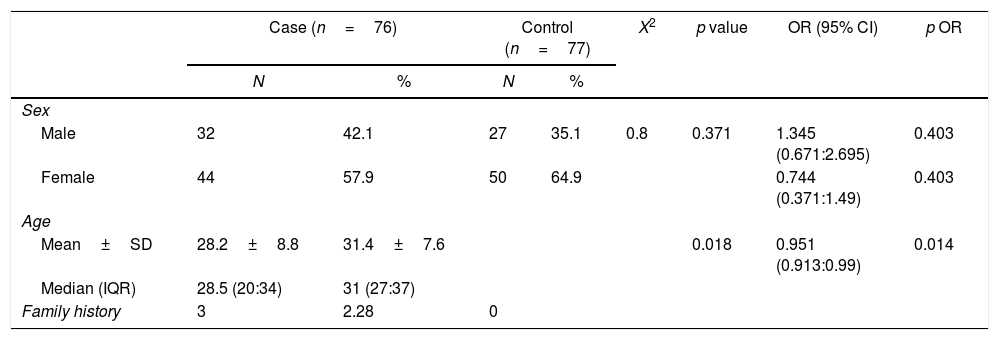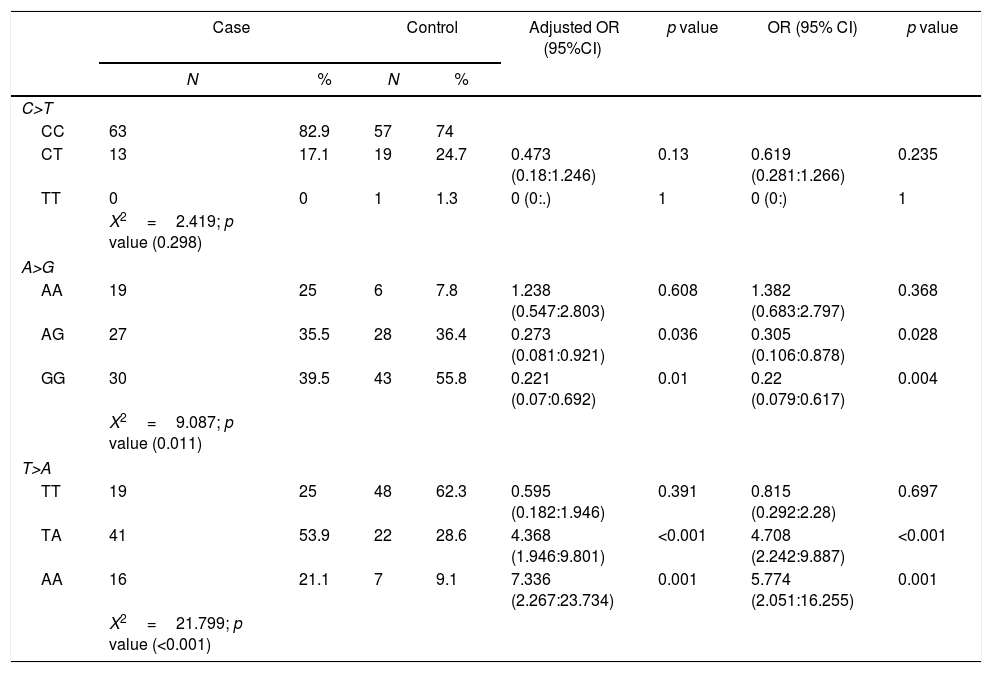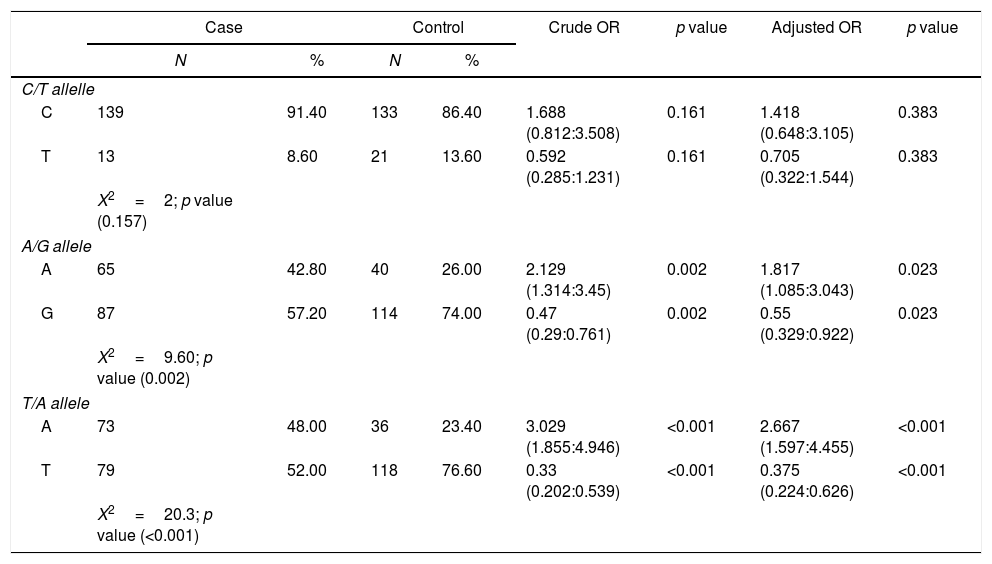Keratoconus is a progressive disorder distinguished by thinning of the corneal tissue and bulging forward into a cone-shaped fashion. Yet its aetiology, which is multifactorial, despite intensive research remains elusive. Corneal exposure a reactive oxygen species causing oxidative DNA damage has been reported to be associated with QC and therefore suggesting that DNA base excision repair mechanism might lie behind the pathogenesis of the disease.
MethodsWe studied the association of three variants in two REB genes (XRCC1 and POLG) and QC occurrence in a cohort of patients from Egypt. Genotyping of the three variants was performed using PCR and restriction enzymes analyses.
ResultsWe observed that A allele and A/A genotype of the c.1196A>G variant in the XRCC1 gene were significantly associated with increased QC occurrence while the G allele was associated with decreased QC occurrence. Similarly, the A/A genotype of the c.-1370T>A polymorphism in the POLG gene and the A allele were associated with increased occurrence of QC, while T/A genotype and the T allele were accompanied with decreased occurrence of QC. On the other hand, no association was observed between the c.580C>T variant in the XRCC1 gene and QC occurrence among the studied group of patients.
ConclusionOur results suggest that c.1196A>G variant of the XRCC1 and c.-1370T>A variant of the POLG gene may be involved in QC pathogenesis and might be considered as a genetic risk factors of the disease among Egyptian population.
El queratocono (QC) es un trastorno progresivo que se distingue por el adelgazamiento del tejido corneal y la protrusión hacia adelante en forma de cono. Sin embargo, su etiología, que es multifactorial, sigue siendo esquiva a pesar de la intensa investigación. Se ha informado que la exposición corneal a especies reactivas de oxígeno que causa daño oxidativo del ADN está asociada con QC y, por lo tanto, sugiere que el mecanismo de reparación de la escisión de la base del ADN podría estar detrás de la patogénesis de la enfermedad.
MétodosEstudiamos la asociación de tres variantes en dos genes REB (XRCC1 y POLG) y la aparición de QC en una cohorte de pacientes de Egipto. El genotipado de las tres variantes se realizó utilizando análisis de PCR y enzimas de restricción.
ResultadosObservamos que el alelo y el genotipo A/A de la variante c.1196A>G en el gen XRCC1 se asociaron significativamente con un aumento de la aparición de QC, mientras que el alelo G se asoció con una disminución de la ocurrencia de QC. Del mismo modo, el genotipo A/A del polimorfismo c.-1370TA en el gen POLG y el alelo A se asociaron con una mayor aparición de QC, mientras que el genotipo T/A y el alelo T estaban acompañados de una disminución de la ocurrencia de QC. Por otro lado, no se observó ninguna asociación entre la variante c.580C>T en el gen XRCC1 y la incidencia de QC entre el grupo de pacientes estudiado.
ConclusiónNuestros resultados sugieren que las variantes c.1196A>G del XRCC1 y c.-1370T>A del gen POLG pueden estar involucrada en la patogénesis QC y podrían considerarse como un factor de riesgo genético de la enfermedad entre la población egipcia.













